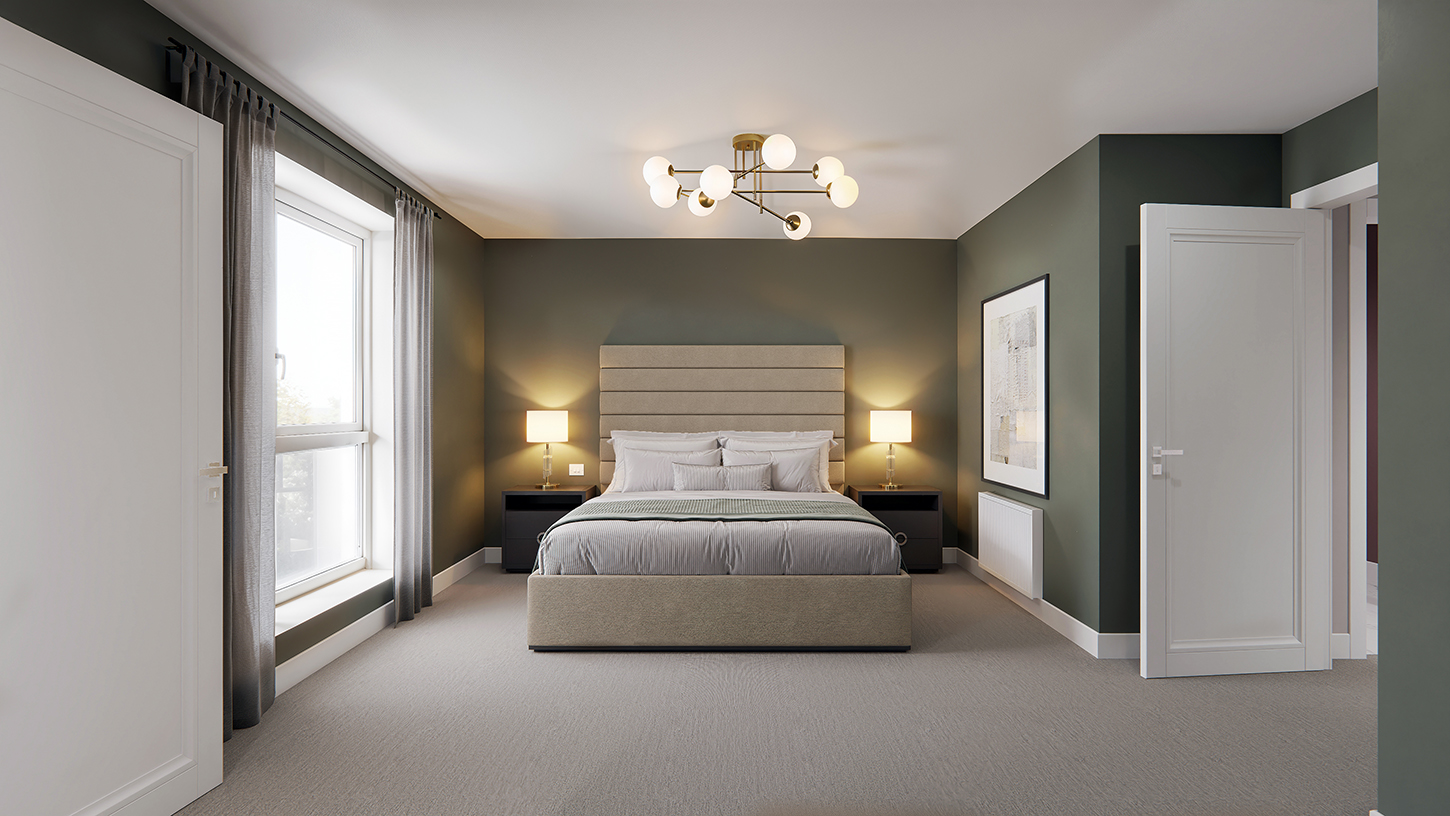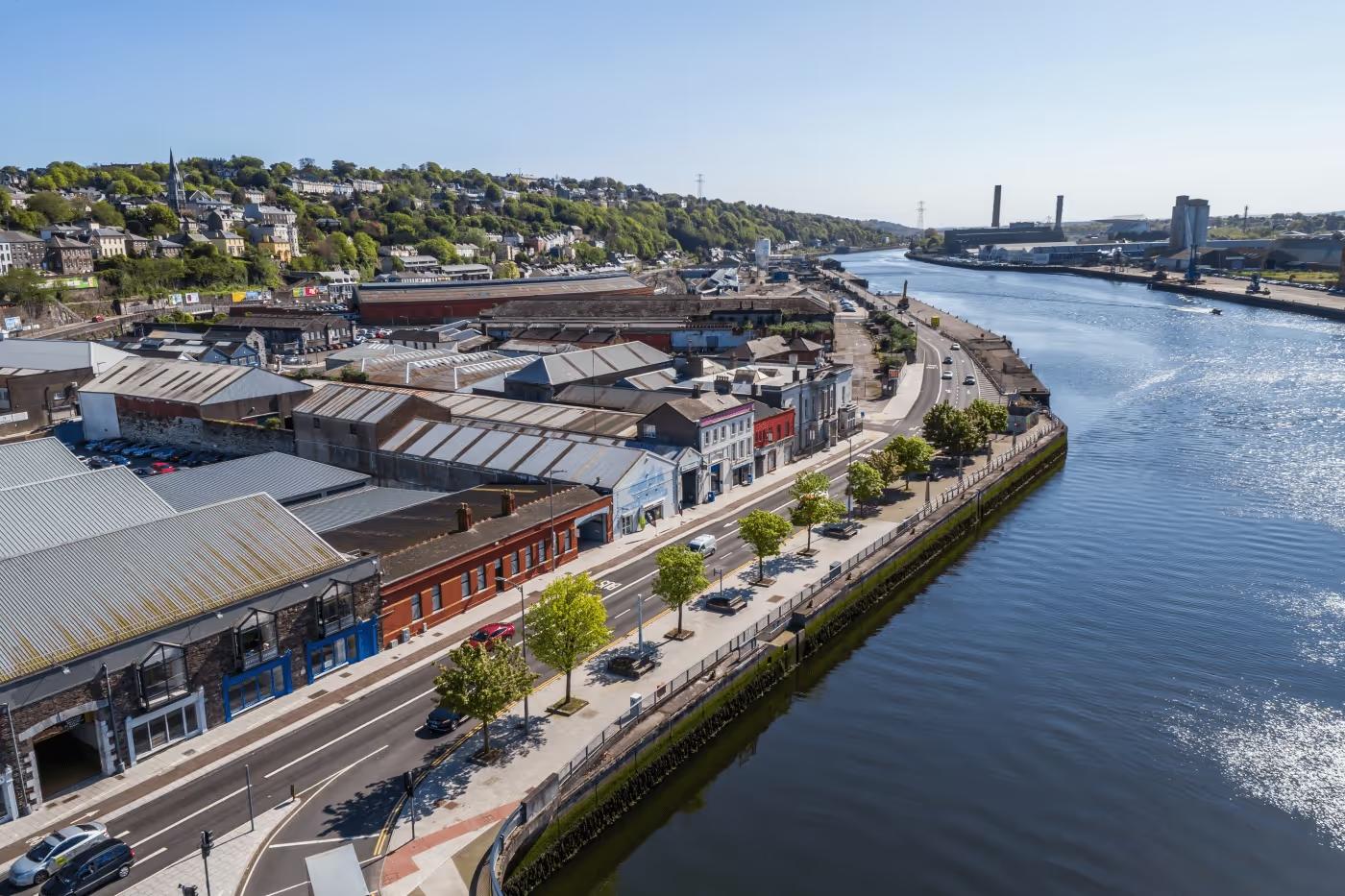



Baker Hall
Brief
Baker Hall by Glenveagh PLC is a thoughtfully planned residential development located in Navan, County Meath. This community-centric project combines modern design and sustainability, offering a range of A-rated homes in a tranquil setting minutes from Navan town centre. With over 300 homes already occupied and additional phases under construction, the development includes a mix of two-, three-, and four-bedroom houses, as well as apartments and duplexes designed for energy efficiency and comfort.
The visualisation services for Baker Hall aimed to:
- Showcase the architectural elegance of the homes, highlighting their energy-efficient design and open-plan living spaces.
- Illustrate the community features, including crèche facilities, playgrounds, and communal open spaces, to appeal to families and first-time buyers.
Service Deliverables:
- 360 VR Tour
- Computer-Generated Imagery (CGIs)
Use the slider to view before & after
Use the slider to view before & after
No items found.
Methodology
1. 360 Virtual Reality Tour
Steps:
1. Initial Planning and Briefing
- Collaborate with the marketing and sales team to establish the purpose and target audience for the VR tour.
- Identify key areas or "hotspots" of interest that the VR tour should highlight, such as interiors, exteriors, or specific amenities.
- Determine the desired level of interactivity, such as clickable points for additional information or transitions between spaces.
2. 3D Modelling:
- Use 3D software such as Autodesk 3ds Max to create detailed models.
- Focus on accurately replicating dimensions, materials, and textures.
- Rendering Quality: Use GPU-accelerated tools to enhance visual fidelity, including reflections, shadows, and lighting effects.
- Spatial Calibration: Create 360° panoramic images with the 3D model, ensuring consistency in perspective and scale
3. Feedback and Iteration
- Present draft 360 previews to marketing team for review.
- Incorporate feedback on design elements, navigation, and interactivity to ensure alignment with objectives before panoramic image sign off.
4. Tour Assembly and Interactivity Integration
- Combine 360° panoramic images using software to create 360 VR Tour experience.
- Scene Linking - Connect different spaces within the tour to allow smooth navigation, ensuring logical transitions.
- Interface Design - Customize the user interface to align with branding, ensuring ease of use across devices.
- Performance Optimization - Compress files and optimize scenes to reduce loading times without compromising quality.
5. Deployment and Integration
- Device Compatibility - Test the tour on various platforms, including desktops, mobile devices, and VR headsets like Oculus Quest or HTC Vive.
- Upload the tour to hosting platform Eyespy for Daft functionality.
- Embed links for integrating the VR tour into websites, marketing emails, or social media platforms.

(Click image above to browse Gallery)
2. Computer-Generated Imagery (CGIs)
Steps:
1. Concept Understanding:
- Review architectural designs, mood boards, and material specifications.
- Conduct meetings with architects and developers to grasp the project's vision and select the desired viewpoints for exteriors and interiors.
2. 3D Modelling:
- Use 3D software such as Autodesk 3ds Max to create detailed models.
- Focus on accurately replicating dimensions, materials, and textures.
3. Material and Texture Mapping:
- Apply high-quality textures, materials, and finishes to surfaces.
4. Lighting Setup:
- Simulate natural and artificial lighting conditions using HDRI maps and light sources.
- Optimize lighting for the time of day that best represents the project’s mood.
5. Rendering:
- Use rendering engines like V-Ray, Corona, or Lumen to produce high-resolution images.
- Incorporate post-processing using Adobe Photoshop for colour grading and final adjustments.
6. Marketing Team Reviews:
- Present drafts for feedback and refine based on client requirements before sign off.
- Final render and deliver as full high resolution CGIs.






